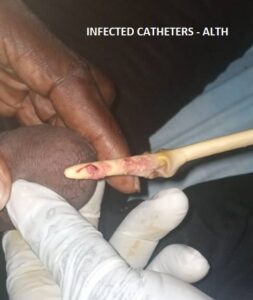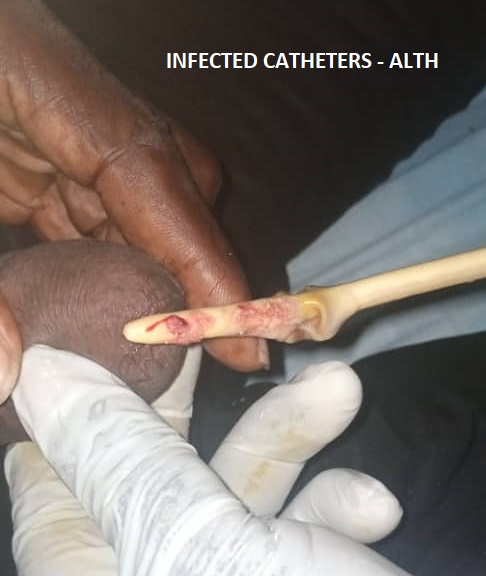A catheter (in situ catheters) is a tube inserted into your urethra. It drains urine from your bladder into a collection bag. There is known two reasons why you may need catheter, if you did surgery or you have your urinary tubule fails to control urine discharge i.e. you can’t control your bladder function.
Whatever the condition that led to the use of catheter isn’t the concern, but the possible infections on the careless use of it and what are the diagnosed complication about the infection are worth discussing
What are the Causes infected catheter?
Infiltration of bacteria or fungi into your urinary tract via the catheter may cause serious infections most especially when they grow and multiply.
Possible other methods of getting infection occurs during catheterization, which are:
- The catheter may become contaminated upon insertion
- The drainage bag may not be emptied often enough
- Bacteria from a bowel movement may get on the catheter
- Urine in the catheter bag may flow backward into the bladder
- The catheter may not be regularly cleaned
What Are the Symptoms of an infected catheter?
An infected catheter shows similar symptoms to a typical urinary tract infection (UTI). These include:
- Cloudy urine
- Blood in the urine
- Strong urine odour
- Urine leakage around your catheter
- Pressure, pain, or discomfort in your lower back or stomach
- Chills
- Fever
- Unexplained fatigue
- Vomiting
If you have a catheter and notice any localized discomfort, waste no time in getting across to us at ALTH.


How to avoid infection?
The most effective preventive measures are avoiding catheterization and removing catheters as soon as possible. Optimizing the aseptic techniques and maintaining a closed drainage system also reduce risk. Above all, avoiding catheter infection is more valuable than treating the infection because, if the infection isn’t quickly diagnosed, may cause a more serious secondary infection.
- Clean the skin around the catheter each day
- Keep the drainage bag below your bladder
- Empty the drainage bag several times per day
- Keep the catheter tube from kinking
- Wash your hands before and after touching the catheter or drainage bag
- Change the catheter at least once per month
- Catheters shouldn’t be left in longer than needed, as longer use is associated with a higher risk of infection.
Potential Complications of an infected Catheter
Prompt treatment of an infected Catheter is essential. An untreated infected Catheter can lead to a more serious kidney infection. Also, people with catheters may already have conditions that compromise their immune systems. Fighting off an infected Catheter can cause further immune system stress. This makes you more vulnerable to future infections
Treatment of infected catheter
The most potent treatment occurs during catheterization which involves maintaining proper hygiene during insertion. Another method is the use of antibiotics, recommended by a physician
Asymptomatic, low-risk patients are not treated. Symptomatic and high-risk patients are treated using antibiotics and supportive measures. The catheter should be replaced when the treatment begins.


Recent Comments